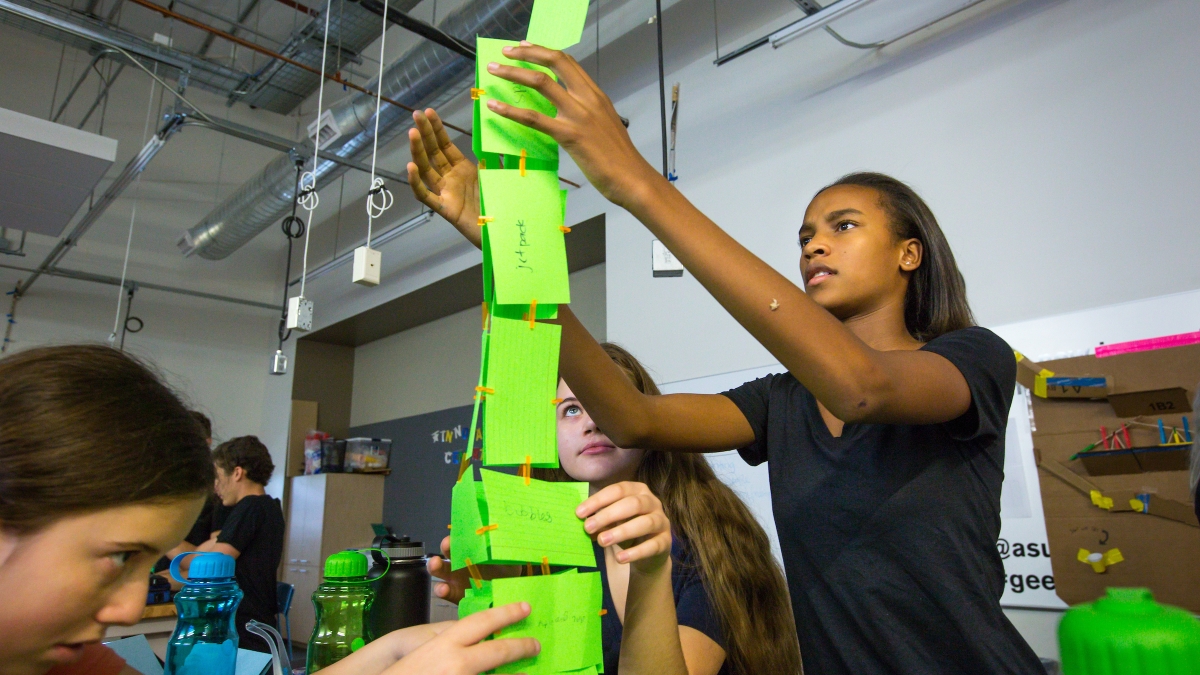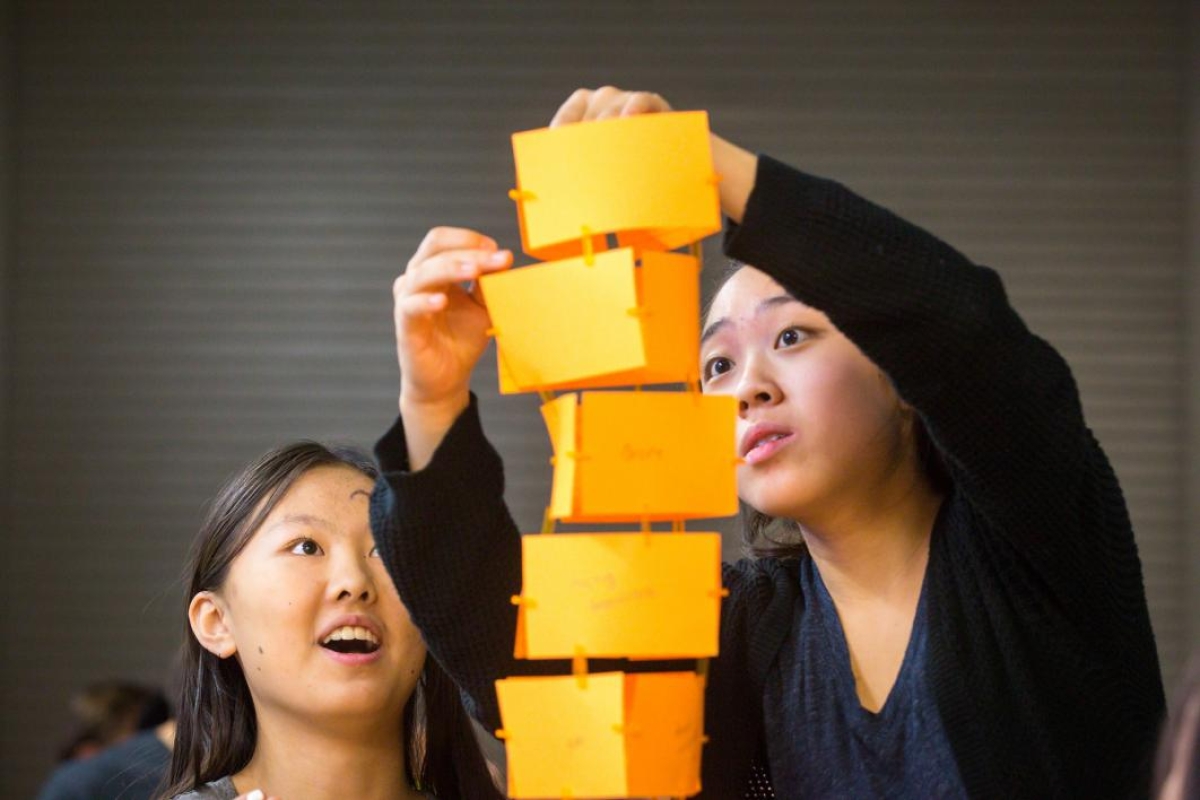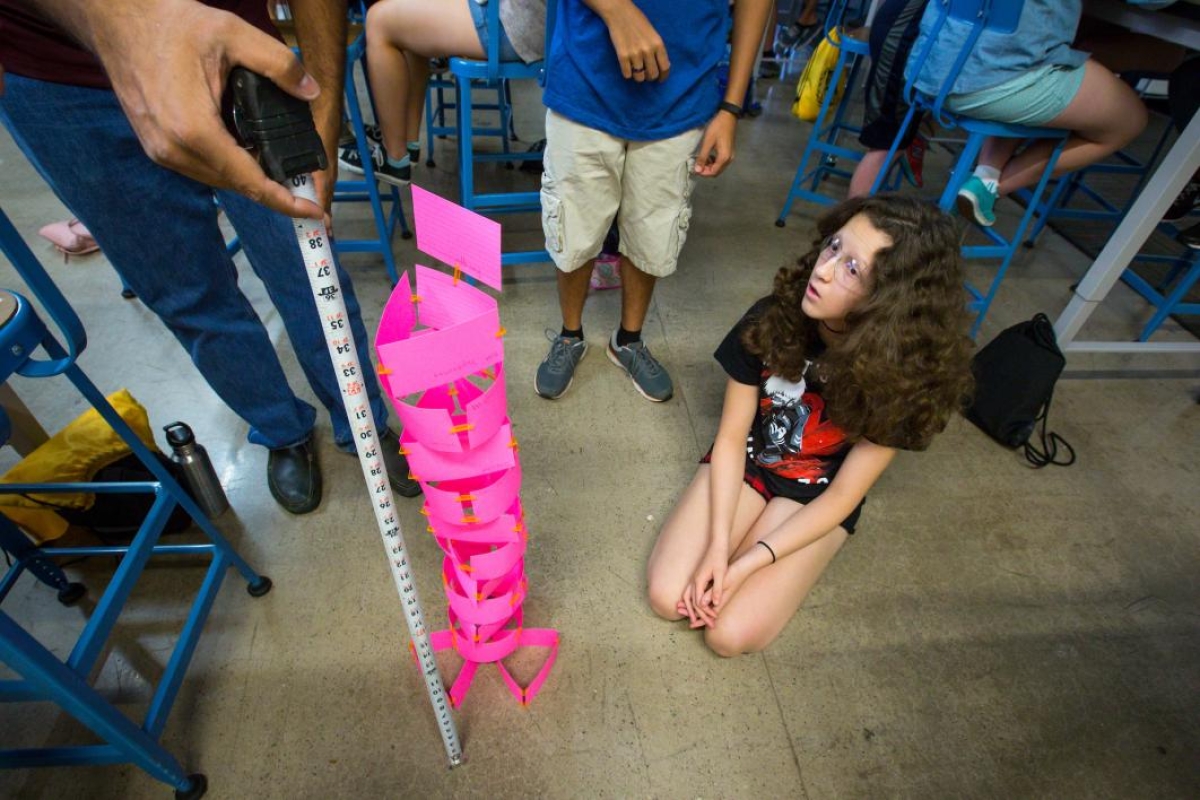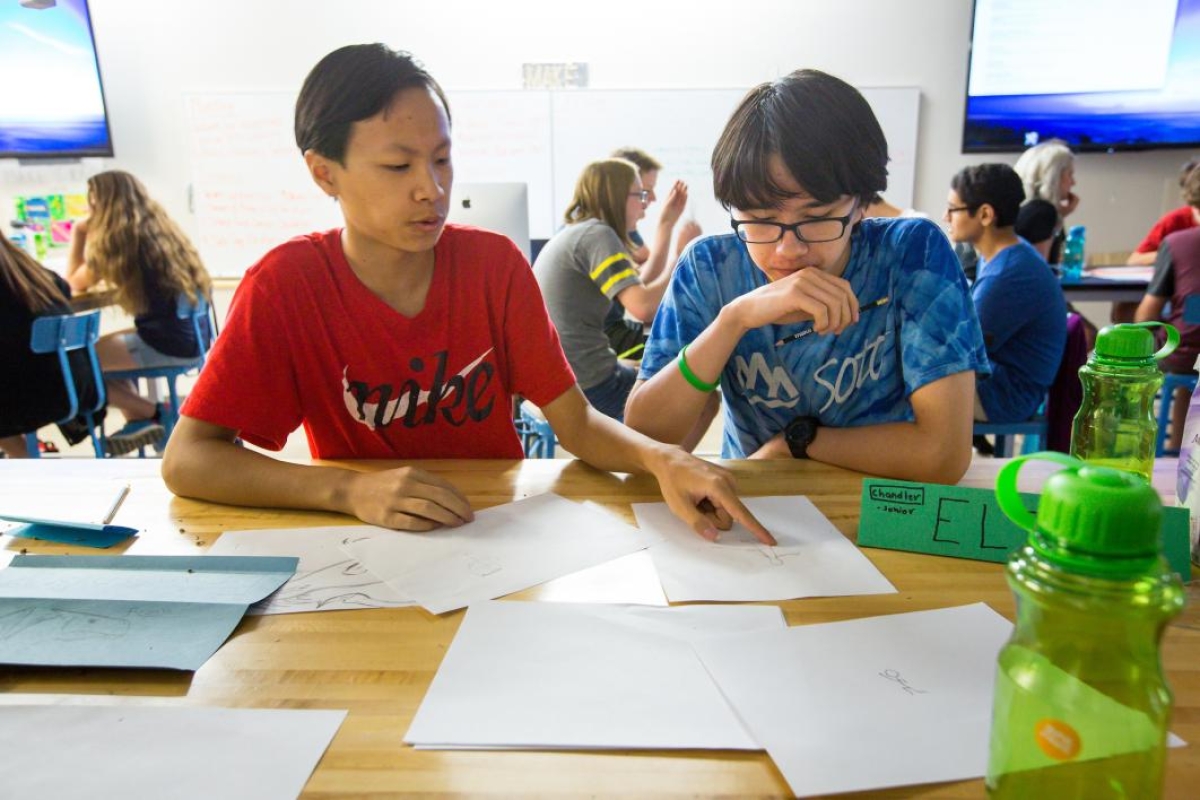Last year, Elie Gross programmed a computer chip to run a chain-reaction device that turns off an alarm, flips on a coffee maker and starts a shower water heater.
She’s only 15 years old.
Elie learned through the process that “if you fail at something, you can always fix it. There’s so many different ways to approach a problem.”
She fit right in at Arizona State University's Art of Invention summer camps, hosted by the Ira A. Fulton Schools of Engineering. The weeklong camps help middle- and high school students develop the knowledge and skills to get ideas out of their heads and into the real world. One session, “Design Thinking and Creative Problem Solving,” called on students to imagine, create and prototype solutions to everyday issues. The team-based approach taught students to identify a problem, brainstorm potential solutions, synthesize ideas, create a model and communicate visually. Another session, “Introduction to Making and Tinkering,” involved 3-D printers and computer microcontrollers.
Instructors worked with the young inventors, engineers and designers at the ASU Chandler Innovation Center.
Here’s what some of the people involved had to say about the camps and why they're important:
“Ask anyone to empty the contents of their pockets and they’ll see exactly how an engineer has impacted their life. Smartphones. Fitness bands. Remote Start Keyless Entry – all those great things we use on a daily basis were made a reality by engineers.”
— Camp instructor Lynne Nethken, a mechanical engineering graduate student at ASU
***
“Students quickly come to the realization that they can solve problems that they care about. They can design for the future, imagining and making something new.”
— Camp director Micah Lande, assistant professor in the engineering and manufacturing engineering programs at the Polytechnic School in the Ira A. Fulton Schools of Engineering
***
“A promise of making and entrepreneurship within engineering and engineering education is that we can spark local and large scale manufacturing and a group of students who see that as a viable career pathway.”
— Lande, camp director, assistant professor
***
“I’m amazed by technology. I not only want to be a part of it, but lead the charge. I also want to help people and make life better for them, too.”
— Campgoer Ameil Jones, rising senior at Tempe Preparatory Academy
***
“My mother always says the most rewarding part of her job isn’t the money but meeting her purpose. If I did that, it would be great.”
— Campgoer Amy Chen, rising junior at BASIS Chandler
***
“I really drive home this point — you have the ability to make whatever you want. … I try to break down the mental barriers that students put up themselves. Be whatever you want to be.”
— Camp instructor Deep Patel, electrical engineering graduate student at ASU
Top photo: Jada Sims, 14, of Phoenix, adds a top layer and flag to a tower made of cards and clips on the first day of the weeklong "The Art of Invention: Design Thinking and Creative Problem Solving" at Chandler Innovation Center on Monday, July 18.
More Science and technology

Applied Materials invests in ASU to advance technology for a brighter future
For nearly 60 years, global giant Applied Materials has been hard at work engineering technology that continues to change how microchips are made.Their products power everything from flat-panel…

Meet ASU engineering students who are improving health care, computing and more
Furthering knowledge of water resource management, increasing the efficiency of manufacturing point-of-care health diagnostic tools and exploring new uses for emerging computer memory are just some…

Turning up the light: Plants, semiconductors and fuel production
What can plants and semiconductors teach us about fuel production?ASU's Gary Moore hopes to find out.With the aim of learning how to create viable alternatives to fossil-based fuels, Moore — an…






